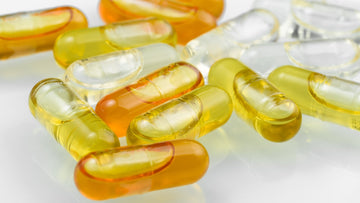1. What Are Polyunsaturated Fatty Acids and Omega-3?
Polyunsaturated fatty acids (PUFAs) are long-chain fatty acids characterized by having two or more double bonds in their carbon chains. Like all fatty acids, they consist of a carboxyl group at one end and a methyl group at the other. The presence of multiple double bonds distinguishes PUFAs from saturated and monounsaturated fatty acids. The two primary categories of PUFAs are Omega-3 and Omega-6 fatty acids.
Omega-3 fatty acids, also known as n-3 fatty acids, include three main types:
-
Alpha-linolenic acid (ALA)
-
Eicosapentaenoic acid (EPA)
-
Docosahexaenoic acid (DHA)
ALA and linoleic acid are considered essential fatty acids, meaning they must be obtained through the diet. While ALA can be converted into EPA and subsequently DHA in the human body, this conversion — primarily occurring in the liver — is limited, with reported rates below 15%. Therefore, directly consuming EPA and DHA through food or dietary supplements is the most effective way to increase their levels in the body.
ALA is found in plant-based oils such as perilla seed oil, flaxseed oil, sesame oil, soybean oil, and canola oil.
EPA and DHA are abundant in algae, marine fish, krill, and shellfish.
Notably, krill oil contains phospholipid-bound Omega-3s, which may offer higher bioavailability compared to traditional fish oil.
👉 Looking for plant-based Omega-3 ALA? Try our new arrivals
🔗 Organic Hemp Seed Oil Supplement — naturally rich in ALA and other essential nutrients.
👉 Prefer a traditional ALA source?
🔗 Organic Flaxseed Oil Supplement — cold-pressed and high-bioavailability.

2. Benefits of Omega-3
According to the National Institutes of Health (NIH), Omega-3 fatty acids offer a range of science-backed health benefits, including:
① Supporting cardiovascular health by lowering triglyceride levels and reducing the risk of heart disease.
② Promoting healthy development and neurodevelopment in infants.
③ Enhancing cognitive function and potentially reducing the risk of Alzheimer’s disease.
④ Helping prevent age-related macular degeneration (AMD) and alleviating dry eye syndrome.
⑤ Managing symptoms of rheumatoid arthritis (RA).
⑥ Possibly lowering the risk of certain cancers, such as breast and colorectal.
3. Recommended Safe Intake of Omega-3
① Alpha-Linolenic Acid (ALA):
The NIH provides the following daily recommended amounts of ALA:
(Insert table or chart if needed)
② EPA and DHA:
The European Food Safety Authority (EFSA) states that long-term consumption of EPA and DHA supplements totaling up to 5 grams per day is considered safe for adults, with no observed adverse effects on:
-
Bleeding time
-
Immune function
-
Glucose homeostasis
-
Lipid peroxidation
Similarly, the U.S. Food and Drug Administration (FDA) concludes that daily intake of EPA and DHA not exceeding 5 grams is safe when used as directed.
4. Possible Side Effects and Interactions
Omega-3 fatty acids may interact with certain medications. For instance, taking Omega-3 supplements in conjunction with anticoagulant drugs like warfarin (Coumadin) may increase the risk of bleeding.
The FDA recommends that the combined daily intake of EPA and DHA should not exceed 5 grams. Commonly reported side effects of Omega-3 supplements are generally mild and may include: unpleasant taste, bad breath, heartburn, nausea, gastrointestinal discomfort, diarrhea, headache, sweat with a fishy odor.







